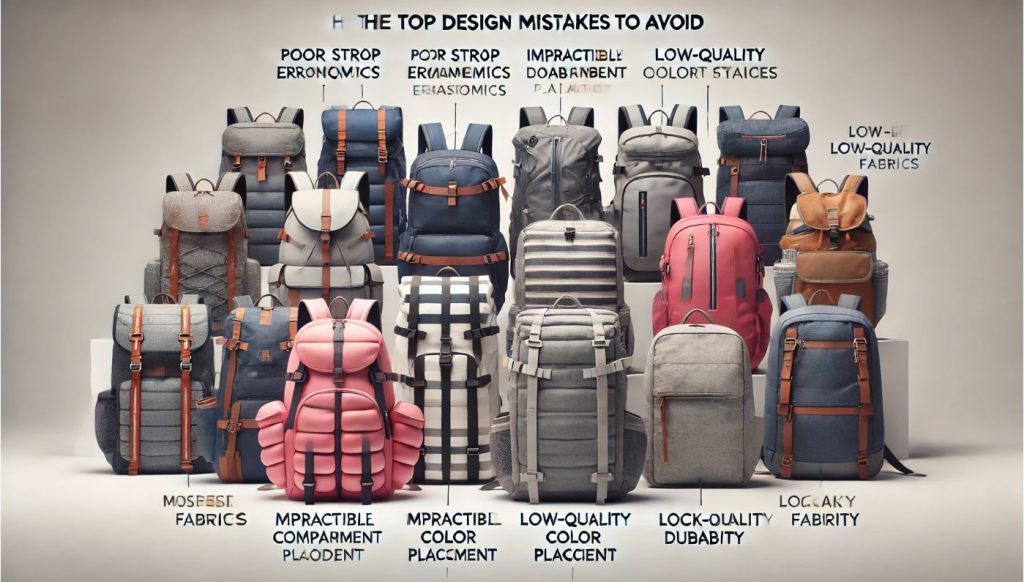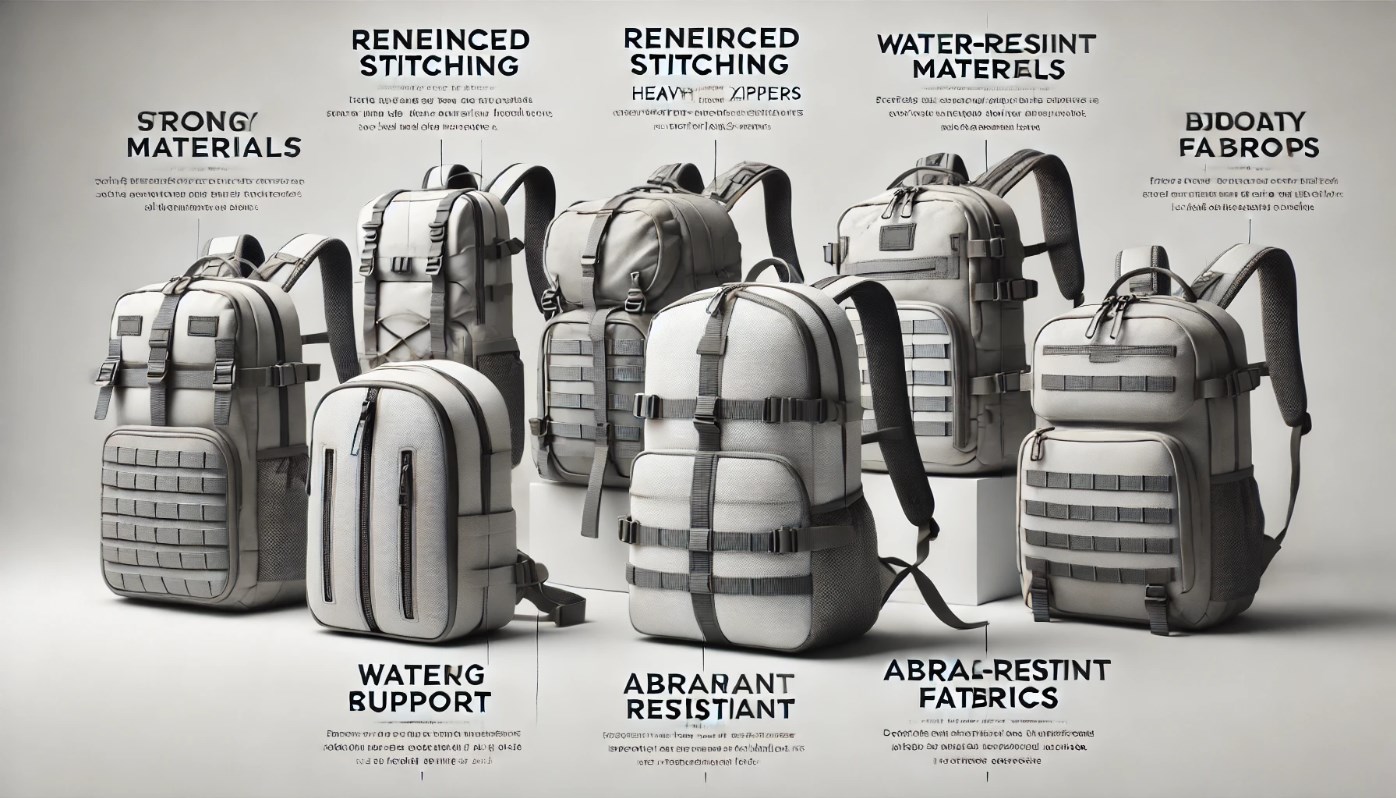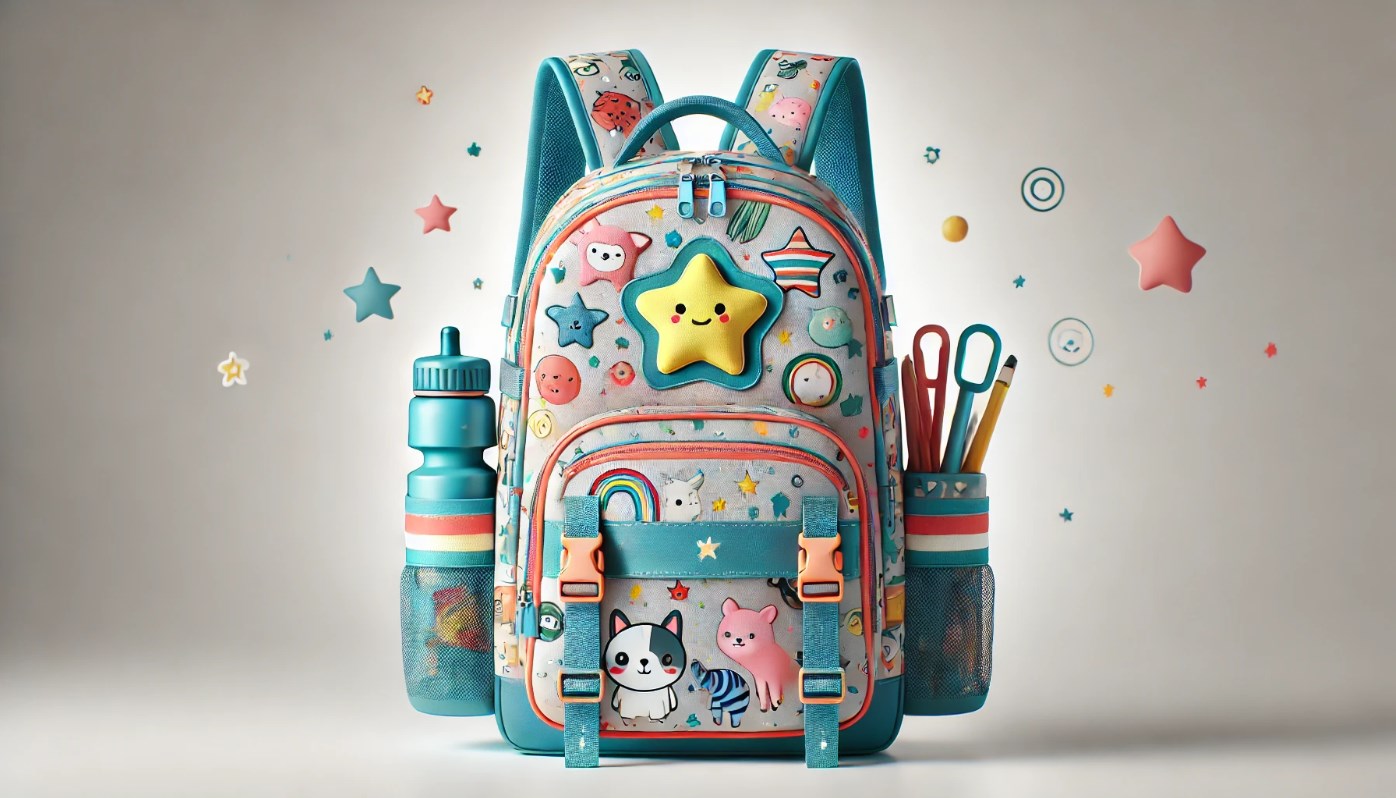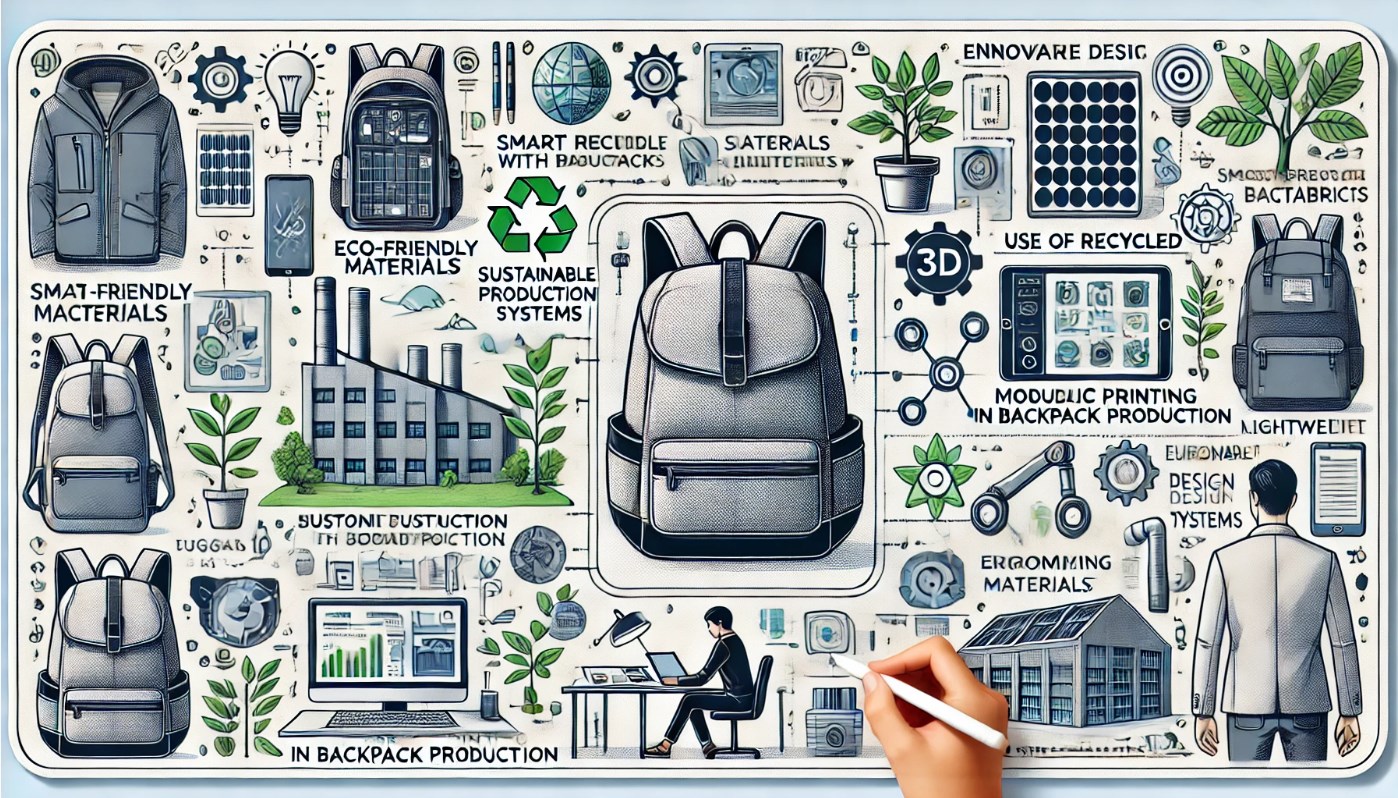Designing a backpack that stands out in a crowded market and meets the needs of your target consumers is no easy task. With numerous functional and aesthetic considerations, it’s easy to make design mistakes that can negatively impact the overall user experience. Whether you’re designing backpacks for school children, travelers, outdoor enthusiasts, or fashion-conscious individuals, avoiding certain design mistakes can make the difference between a successful product and one that fails to meet market expectations.
Poor Ergonomics and Comfort
Ignoring Weight Distribution
One of the most critical aspects of backpack design is ensuring proper weight distribution. A backpack that doesn’t evenly distribute weight across the shoulders and back can cause discomfort and even long-term physical issues, especially if the user is carrying heavy loads. This is particularly important for school backpacks, travel bags, and outdoor gear, where users may carry multiple items over long distances.
Many backpack designers fail to consider how the backpack’s straps and structure affect weight distribution. If a backpack is too narrow or lacks proper padding, it can place undue pressure on certain areas, leading to muscle strain, poor posture, and, over time, back and shoulder pain.
How to Avoid This Mistake
- Wide, Padded Straps: Ensure your backpack features wide, comfortable, and well-padded shoulder straps. This helps to evenly distribute the weight of the contents across the shoulders and prevents discomfort.
- Adjustability: Make sure the straps are adjustable to accommodate different body types and allow users to customize the fit for maximum comfort. A sternum strap can also help prevent the backpack from shifting and add stability.
- Hip Belt: For larger backpacks, such as those intended for hiking or long travel, consider adding a padded hip belt to transfer some of the weight to the user’s hips. This feature is essential for heavy loads, as it reduces strain on the back and shoulders.
- Ergonomic Back Panel: Use a curved back panel that mimics the natural shape of the spine. A well-designed back panel, often made of foam or mesh, provides better comfort and airflow, especially during prolonged use.
Lack of Back Support
Back support is another critical element in ergonomic backpack design. Without it, the backpack can cause the user to hunch forward or lean to one side, leading to spinal issues or muscle fatigue. Inadequate back support is often a result of poor design or failure to incorporate an internal structure that offers proper alignment.
How to Avoid This Mistake
- Contoured Panels: Consider integrating a contoured back panel with a slight curve to follow the natural curve of the user’s spine. This will provide additional support and help maintain better posture.
- Breathable Mesh Padding: A breathable mesh padding not only provides support but also enhances airflow to prevent overheating and excessive sweating. This is especially important for students or travelers who carry their backpacks for extended periods.
- Lumbar Support: Some higher-end backpacks, especially those designed for travel or hiking, include lumbar support that adds extra comfort for those carrying heavy loads. This type of support reduces pressure on the lower back, which is essential for maintaining comfort.
Inadequate Organization and Functionality
Failing to Provide Sufficient Compartments
Backpacks are designed to carry various items, from books and laptops to snacks and water bottles. A major mistake in backpack design is failing to include enough compartments to properly organize the contents. When there’s not enough space or compartmentalization, users may struggle to find what they need quickly, leading to frustration.
A single, large compartment with no dividers can make it difficult to organize different items, and users may end up digging through the entire bag to retrieve something. This is particularly problematic for school backpacks, where kids and teens often need a system to keep their books, stationery, and personal items separated.
How to Avoid This Mistake
- Multiple Compartments: Include multiple compartments to separate various items. A main compartment for books, a smaller zippered section for stationery, and a laptop sleeve for electronic devices are a few examples.
- External Pockets: For convenience, consider adding external pockets for easy access to items like keys, a water bottle, or a phone. Mesh side pockets are great for water bottles, while smaller zippered pockets can hold small items like pens or snacks.
- Internal Dividers: For larger backpacks, internal dividers or mesh organizers can help compartmentalize the space. These features allow users to store things more efficiently, reducing the chances of items being damaged or misplaced.
Overcomplicating the Design
While compartments are essential for organization, overcomplicating the design by adding too many pockets or unnecessary features can detract from the overall user experience. Excessively complex designs can make it difficult to quickly access the items you need and result in a disorganized appearance. Simplicity is key in ensuring ease of use, especially for schoolchildren or commuters who need to quickly access their belongings.
How to Avoid This Mistake
- Keep It Simple: Focus on the most important compartments and features. A backpack should have enough storage options to meet the user’s needs without becoming overwhelming.
- Prioritize Accessibility: Ensure that the most frequently accessed items are easy to reach. For example, place a water bottle pocket on the side or an easy-access top pocket for small essentials.
- Avoid Excessive Zippers or Straps: While aesthetic appeal may tempt you to add extra zippers, straps, or embellishments, these can often become a hassle for the user. Stick to functional features that serve a clear purpose.
Choosing the Wrong Materials
Poor Quality Fabrics
One of the most common design mistakes is selecting low-quality materials that do not hold up under everyday use. Choosing cheap or flimsy fabrics can compromise the durability of the backpack, leading to rips, tears, or discoloration over time. For example, backpacks made from low-grade polyester may wear out quickly, especially when exposed to moisture or rough handling.
How to Avoid This Mistake
- Use Durable Fabrics: Opt for durable materials like Cordura nylon, ripstop nylon, or high-denier polyester, which are resistant to wear and tear and offer water resistance.
- Water-Resistant Coatings: For backpacks intended to be used in all weather conditions, choose fabrics with water-resistant coatings like DWR (Durable Water Repellent). This will keep the contents dry even in light rain.
- Reinforced Stitching: Ensure that your backpack has reinforced stitching, especially at stress points like the base, straps, and zippers. Double or triple stitching at these areas will improve the overall strength and longevity of the backpack.
Ignoring Environmental Impact
As eco-conscious consumers become increasingly concerned about the environmental impact of their purchases, using unsustainable materials can alienate your target market. Materials such as single-use plastics, non-recycled polyester, and leather from unsustainable sources are all controversial in today’s market.
How to Avoid This Mistake
- Use Sustainable Fabrics: Choose sustainable fabrics like organic cotton, recycled polyester (rPET), or hemp. These materials not only reduce environmental harm but also appeal to eco-conscious consumers.
- Eco-Friendly Manufacturing Practices: Beyond material choices, ensure that your production processes are environmentally responsible. Work with manufacturers who implement ethical labor practices, reduce water consumption, and minimize waste in production.
- Transparency in Sourcing: Offer transparency about where and how your materials are sourced. Many consumers today want to know that the products they purchase have been ethically and sustainably produced.
Poor Aesthetic Design and Branding
Not Considering Visual Appeal
In a crowded market, a backpack’s aesthetic design plays a huge role in its success. A poorly designed, unattractive backpack may be overlooked in favor of competitors that have more visually appealing products. Failing to create a cohesive, modern design can result in a lack of marketability and lower sales.
The color scheme, shape, and overall style of the backpack are all crucial elements of its visual appeal. Backpack designs should align with the brand’s identity and resonate with the target market. Whether you’re designing for active youth or professionals, the visual appeal should capture attention and convey the product’s value.
How to Avoid This Mistake
- Color Schemes: Choose a color palette that aligns with your brand and target audience. Bright colors may work well for children’s backpacks, while neutral tones or sleek designs are better suited for professional or high-end markets.
- Branding and Logos: Ensure your branding is prominent yet tasteful. Your logo should be easily visible but not overpower the overall design. Avoid overcrowding the backpack with excessive logos or branding that could make it look cluttered.
- Aesthetic Consistency: Maintain consistency in style across your product range. If you’re creating a series of backpacks, they should have a unified look, with similar materials, colors, and design features.
Overlooking Functional Design for Aesthetic
While aesthetics are important, you should never sacrifice functionality for visual appeal. A backpack that looks stylish but lacks essential features such as comfortable straps, durable fabrics, or sufficient storage space will quickly lose its appeal once consumers start using it.
How to Avoid This Mistake
- Balance Form and Function: While creating a visually attractive design, always prioritize functionality. Consider the backpack’s purpose, how it will be used, and the practical needs of the user.
- User-Centered Design: Focus on the user experience by testing prototypes and gathering feedback. A functional, comfortable, and aesthetically pleasing backpack will create a positive customer experience and lead to better sales.
Overlooking Testing and User Feedback
Not Prototyping or Testing the Design
One of the biggest mistakes you can make is skipping the prototyping or testing phase. Skipping this step can lead to unanticipated design flaws that compromise the functionality, comfort, or durability of your backpack. A backpack might look great on paper, but real-world testing is essential to identify problems before it hits the market.
How to Avoid This Mistake
- Prototype and Test: Always create multiple prototypes and test them in real-world conditions. Allow potential users to test the backpacks and gather feedback to refine the design further.
- Iterate Based on Feedback: Take user feedback seriously and use it to make necessary adjustments. Address any issues related to comfort, functionality, or durability before moving to mass production.
Not Listening to the Consumer
A design that doesn’t align with what consumers want can quickly lose its appeal. Understanding your target audience’s needs, preferences, and pain points is crucial to creating a successful backpack. Brands that fail to listen to consumer feedback or fail to conduct market research risk alienating their customer base.
How to Avoid This Mistake
- Conduct Market Research: Invest time in understanding your target market’s preferences through surveys, focus groups, or social media polls.
- Engage with Your Customers: Stay connected with your customer base through feedback forms, product reviews, or direct communication to ensure that your backpacks meet their needs and expectations.
By being mindful of these top design mistakes and implementing solutions that prioritize comfort, functionality, sustainability, and visual appeal, you can create backpacks that not only perform well but also resonate with your target audience.







